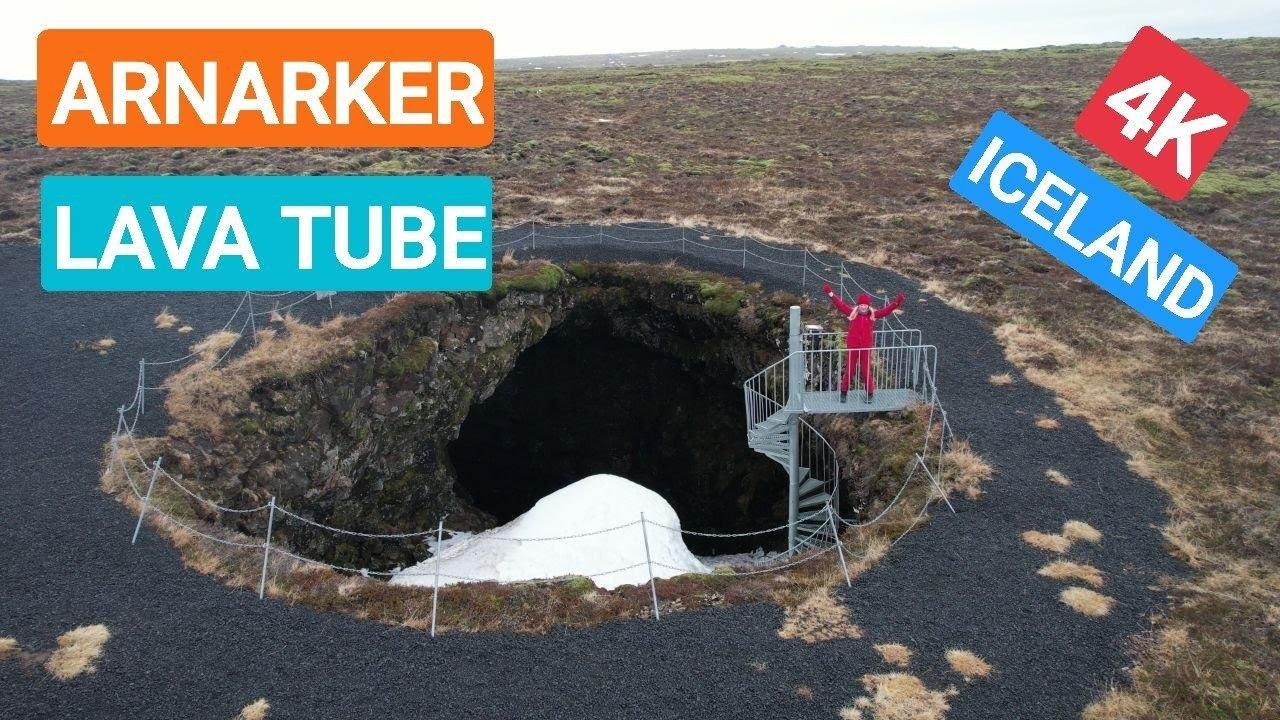Explore Iceland's Arnarker Lava Tube: A hidden gem dating back 5200 years, sculpted by ancient volcanic eruptions. This subterranean marvel, adorned with colossal icicles up to 10 ft long, offers a glimpse into Earth's fiery past. Discover its secrets, from nesting Eagles to eerie skylights, in stunning 4K!
Key Takeaways 
Table of Contents
- Arnarker Lava Tube: Explores the Arnarker Lava Tube, a geological formation in Iceland, formed from a lava eruption 5200 years ago.
- Formation: Describes how lava tubes are formed during volcanic eruptions, primarily found on shield volcanoes with thin basaltic lava flows.
- Characteristics: Highlights the characteristics of lava tubes, including their length, height, and the conditions required for their formation.
- Occurrence: Discusses the occurrence of lava tubes on Earth and other celestial bodies, such as Venus, and their prevalence on volcanic islands like Iceland.
 Formation of Lava Tubes
Formation of Lava Tubes
Lava tubes are intriguing geological formations that emerge during volcanic eruptions. These formations, predominantly found on shield volcanoes, are shaped by flows of relatively thin basaltic lava, notably pahoehoe lava. The process of lava tube formation is intricately linked to the viscosity and temperature of the lava, as well as the slope angle of the volcano.
| Characteristics | Details |
|---|---|
| Composition | Thin basaltic lava predominantly pahoehoe |
| Formation Conditions | Slope angle of no more than 5° |
| Low viscosity of the lava | |
| Hot temperatures up to 1200°C |
The lava flows down the volcano slope, forming a channel-like structure. As the lava flows, its speed and temperature decrease, leading to solidification along the edges and surface of the flow. This solidification creates a roof over the lava flow, forming the characteristic tube shape.
 Occurrence on Earth and Beyond
Occurrence on Earth and Beyond
Lava tubes are not exclusive to Earth; they are also found on other celestial bodies, notably Venus. On volcanic islands like Iceland, lava tubes can extend below sea level. However, their stability can be compromised due to factors such as erosion and collapse of the ceiling.
Sky Lights: During eruptions, the collapse of lava tube ceilings can create narrowly defined openings called "sky lights," as observed in previous drone footage from lava tunnels.
On Earth, lava tubes are primarily found on active volcanoes or geologically young inactive volcanoes, where the necessary conditions for their formation are present. They are particularly abundant in regions such as Hawaii, known for its extensive network of lava tubes. Notably, the longest lava tube in the world, Kumara Cave, spans 65.5 km and is located in Hawaii.
 Lava Tubes Across the Globe
Lava Tubes Across the Globe
Lava tubes are not confined to specific regions; they can be found across the globe, from Hawaii to Europe and beyond. In Europe, Iceland boasts numerous lava caves, including the Arnarker Lava Tube, highlighting the diverse geological landscape of the continent.
| Location | Length |
|---|---|
| Hawaii | Extensive |
| Iceland | Various |
| Sicily | Mount Etna |
| Canary Islands | 17 km (longest) |
Furthermore, lava tubes extend beyond terrestrial boundaries, with occurrences on oceanic volcanic islands and even other planets within our solar system. The exploration and study of lava tubes provide valuable insights into the geological processes shaping our planet and beyond.
In conclusion, lava tubes offer a fascinating glimpse into the dynamic nature of volcanic activity and geological formations. From their formation on Earth to their presence on other celestial bodies, lava tubes serve as a testament to the enduring power of nature and the intricacies of planetary geology.


 Affordable Kundun Economic Build (Intermediate Cost) That Works
Affordable Kundun Economic Build (Intermediate Cost) That Works  for Mu Online Webzen S18.2
for Mu Online Webzen S18.2




